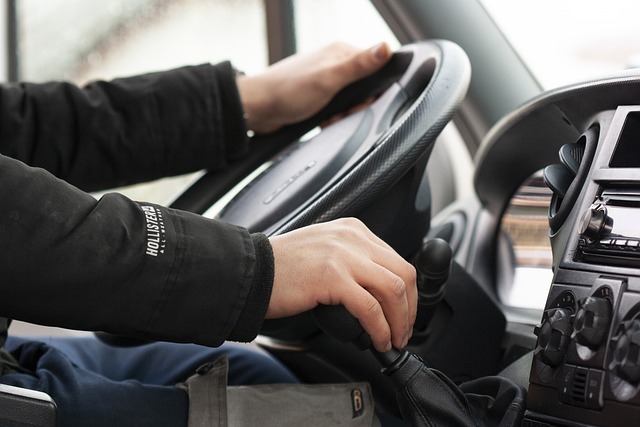Improving road safety is an important goal for any state transportation department. However, we often rely too heavily on traditional approaches like increased traffic enforcement and engineering solutions.
To make real progress on reducing crashes and fatalities on Maryland’s roads, we need to consider fresh, innovative ideas as well. One area that holds a lot of promise is enhancing our public education efforts, especially for young drivers.
Rethinking Driver’s Education
While an important first step, the traditional driver’s education model has clear limitations.
For one, some research suggests traditional driver’s ed graduates are more likely to get in crashes because they overestimate their abilities. Additionally, a 30-hour classroom course and few drives around the block do not adequately prepare teens for the infinite number of hazardous situations they may face once licensed.
To really move the needle on safety, we need more immersive, skills-based driver training programs. These outside-the-box approaches give new drivers far more practice behind the wheel in risky road environments. For example, advanced programs may take teens on highways, rural backroads, or winter driving courses to experience slippery conditions in a controlled setting. Some states now mandate this for license certification.
Expanding simulation training could also help breed better driving habits from day one. With lifelike simulator setups, new drivers can experience and learn to handle extreme weather, brake failures, deer crossings, and more high-consequence events. This allows them to build muscle memory responses to dangers before ever encountering issues on the open road.
Specific Simulation Scenarios
Some specific hazardous scenarios that advanced simulator programs could expose new teen drivers to include:
- Navigating high-speed intersections and properly judging gaps in traffic when making left turns
- Handling hydroplaning on wet roads and regaining control of skidding vehicles
- Responding to sudden pedestrian or animal crossings in low-visibility nighttime settings
- Experiencing complete brake failures and steering out of harm’s way
- Practicing appropriate reactions to other vehicles swerving into their lane or sideswiping them
- Dealing with impaired or aggressive drivers and maintaining composure and defensive strategy
With realistic replications of these and countless other dangers, new drivers can repeatedly encounter risks and make mistakes without dire consequences. This allows them to build experience, reflexes and driving skills to handle potential real-world emergencies.
Advanced simulation technology even permits the creation of gamified challenges to engage teens more actively. For example, schools could hold supervised safe driving competitions with simulators. This lets students test their chops in navigating virtual environments, scoring points for properly reacting to hazards, obeying laws, and achieving safe outcomes in dangerous theoretical scenarios on simulated city streets and highways.
More Rigorous Behind-The-Wheel Practice
In addition to supplemental simulation, expanding mandatory supervised behind-the-wheel practice hours for license certification would also help develop better initial driving abilities. Most states have shockingly low requirements for actual on-road experience prior to licensing new drivers. This needs rethinking.
By boosting compulsory practice drives to 25, 50 or even 100 hours under the supervision of instructors, teens can progress way beyond just the basics of steering and pedals. Instructors can bring them on highways, unfamiliar narrow neighborhood roads, poorly lit rural routes, gravel access paths and other tricky environments. More wheel time allows better calibration of speeds, surfaces, signage, navigation tools, and hazards before going solo.
Maryland specifically could even mandate students to practice in all seasons – not just nice weather in summer months. Learning to drive in winter conditions, heavy rain, or night hours are equally crucial skills often neglected in standard driver’s preparation.
Incorporating these kinds of intensive real-world training regimens into new enhanced driver’s education programs would undoubtedly develop safer, smarter young motorists right off the bat. Yes, the costs and effort involved for schools and families would be greater, but it’s a prudent investment given the consequences of teen crashes. This is so especially when you consider the costs of repairs, healthcare and legal representation in the event of such an accident.
Engaging Younger Students More Deeply
Most traffic safety education starts at high school or later when teens begin the licensing process. However, research clearly shows the value of exposing younger kids to core safe transportation principles. Getting elementary and middle school students actively engaged in road safety concepts makes them stick better when those same students begin driving years down the road.
One novel approach being pioneered is setting up “Safety Town” programs at the local level. These miniature towns use scaled-down buildings, streets, crosswalks and stoplights to teach kids road rules. Young students take turns driving small electric cars through courses, following signs and signals – all while supervised by parents and police volunteers. The immersive nature helps cement good habits early.
We could also develop more intensive bicycle safety training programs in late grade school. With a spike in cycling lately, ensuring kids wear helmets, obey traffic signals, use hand signals properly, and ride defensively becomes even more crucial. Districts could establish bike “stations” on school grounds to provide instructions and let students test out their neighborhood navigation skills.
Starting Even Earlier
Traffic safety instruction could begin even earlier than grade school for maximum impact. Preschools and early elementary programs should consider working road safety messaging and topics into everyday lesson plans or activity rotations. For example, during a craft project, teachers can use toy cars and pretend streets to demonstrate finding and stopping at crosswalks. Gym classes might use floor mat city model setups to practice safe crossing. This ingrains core principles through interactive play at the earliest ages.
Likewise, field trips could emphasize road and transport themes. A walking excursion simply navigating neighborhood blocks with younger pupils lets staff reinforce sidewalk etiquette, stopping routines, sign identification, and intersection vigilance through firsthand modeling. Visits to local DMV offices, mechanics shops or traffic monitoring facilities also build exposure.
The main point is not to assume kids can’t comprehend roadway risks and avoidance actions until they near driving age themselves. Therefore, safety education efforts should meet them at their level far earlier. Doing so imprints responsible security-minded behaviors that blossom naturally the closer students get to their driving years.
Getting Creative with Road Safety Marketing
Public information and marketing campaigns in Maryland do already try to reach demographics most at risk for traffic crashes or violations. But we have room to get more creative with messages and mediums to break through to citizens. This is especially key for teens and young adults.
One tactic could be teaming the state DOT with high school marketing students to co-develop peer-to-peer safe driving PSAs. Broadcasting messages written by friends in their own voice, and shared via youth’s preferred social apps, makes content more relatable. Paid advertising partnerships with Spotify, Snapchat or TikTok to share content widely across their platforms might also increase impressions.
Alternatively, an annual statewide safe driving music contest for high school bands could generate interest. Maryland’s “Battle of the Bands” championship could award cash prizes for best original songs or music videos that encapsulate lifesaving themes: dangers of speeding, responsible actions behind the wheel, speaking up to problem driver friends, etc.
Thinking Local
Beyond digital means, low-tech grassroots options shouldn’t be forgotten either. For example, students could help DOT officials “yarn bomb” prominent statues, landmarks, trees or bridges in ways that depict safe driving messages. These colorful animated displays of street sign shapes, directional arrows, speed warnings and more make public spaces impossible to ignore.
Pop-up temporary safe street installations led by student volunteers also remind communities of constant roadway hazards. At farmers markets, summer concerts and other local events, booths might immerse visitors in simulations – texting while driving golf carts through coned courses, spectacle goggles or “drunk” vision headsets conveying impairment challenges, even augmented reality app experiences making virtual vehicles appear from nowhere in crosswalks to surprise users about situational attentiveness.
Creative placemaking taps into the spirit of neighborhoods allowing students firsthand promotional experience while bringing safety issues closer to home for all residents.
Final Thoughts
Traditional approaches alone cannot lead to the sizable, long-term gains in traffic safety outcomes we want for Maryland citizens. Pressing public health issues like deaths and injuries on our roadways requires creative thinking and fresh outside-the-box ideas.
Enhancing our public education efforts, especially for younger generations of new drivers, cyclists and pedestrians – offers tremendous promise for creating positive culture shifts. By implementing more immersive, skills-focused driver training programs, engaging students continually on safe transit habits from an early age, finding new ways for parents to model good behaviors, and using innovative marketing tactics to blanket communities with lifesaving messaging, we can drive real change for safer mobility in every city and town.







Recent Comments